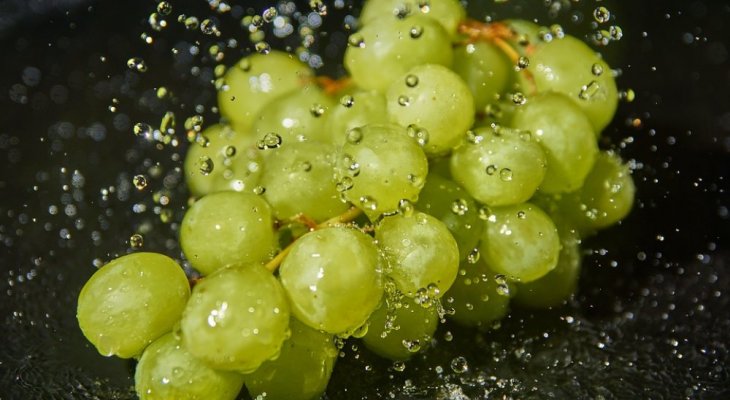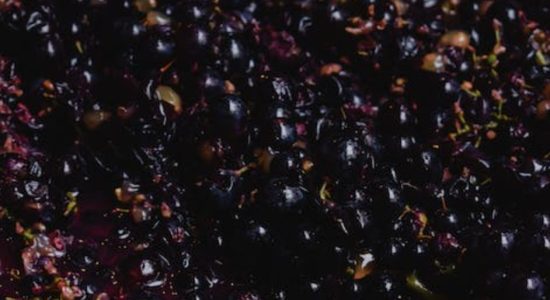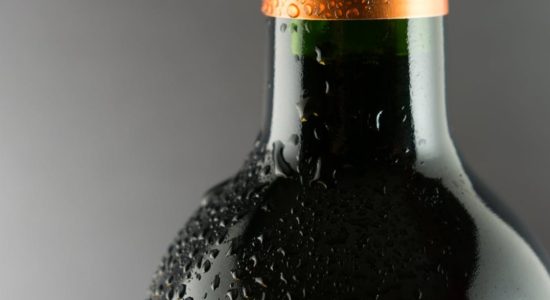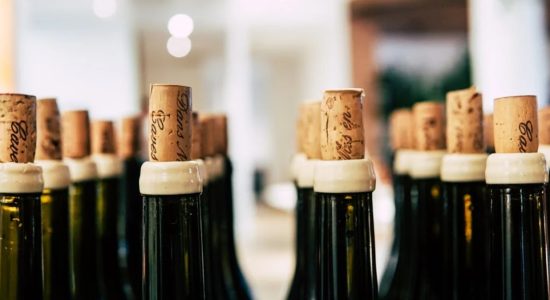How The Climate Affects Wine Making » (Here Is What I Learned)

If wine tasting and winemaking are topics of your interest, it’s likely that you know a thing or two about how weather affects wine’s taste, and therefore, some of the processes it entails.
Here is How the Climate Affects Wine Making:
Cooler Climate Grown Grapes:
- Grapes ripen slower
- Higher levels of acidity and tart taste
- Lower sugar levels
Warmer Weather Grown Grapes:
- Grapes ripen more easily in comparison to cooler weather
- Lower acidity taste
- Higher sugar levels
If you’re looking to identify and learn about every aspect of how weather and climate are affecting your winemaking process, and therefore, its taste, you’ve come to the right place.
I’m going to teach you everything I learned about winemaking, how weather affects the process, ripeness in grapes, when to pick them, and the differences between cool and warm weather, let’s dive in.
Of course, there is much more to this! The weather and even climate change are affecting the winemaking process. So, if you really want to learn more about how weather affects winemaking, walk with me throughout the rest of this blog post.
Read Also: What Is The Easiest Type Of Beer To Brew?
Weather Affects the Aroma Compounds in Wine
Pliny the Elder once said: “In wine, there is truth”. And if you think about it, the process of winemaking is all about being true to the elements and their nature.
A great bottle of wine was not just made, it was grown. There is nothing more true about anything than how wine is created. And of course, in order to grow a nifty bottle of wine, you need to rely on another very true element of nature: Weather & Climate.
But before we go any further, we need to clarify the differences between weather and climate.
Climate refers to general conditions in a location. For instance, Tropical Climate is known for being hot and humid and it is generalized throughout the Caribbean.
Weather, on the other hand, are temporary conditions in a given area, for example, a week of non-stop rain in a certain location.
In terms of vineyard areas, throughout German wine regions, vineyards enjoy a cool climate but will still experience periods of hot weather.
Both climate and weather will naturally affect the aroma and taste compounds in grapes. A simple chemistry that continuously shapes the essence of your chosen glass of wine. Surely depending on any local growing conditions, this produces world-class, balance in flavor, sugar, and acid in your wine.
As was mentioned, warmer temperatures allow the grapes to ripen quicker, leading to higher accumulations of sugar but lose acidity. Right off the bat, a riper grape contributes to a higher-alcohol wine, perceived as the bitter and “hot” of the wine families.
On the other hand, acid grapes, grown in cooler temperatures, offer a more refreshing and sharp taste.
But how can we define the tastes in wine so specifically? Well, aroma is the culprit when wine affects our perceptions of flavor. What we are perceiving as taste when drinking a lovely glass of wine, is actually provided by another sense: smell.
The aroma compounds in grapes are sensitive to weather, especially during the later stages of grape ripening. And because of this, all wine flavors in the world are organized in 3 primary groups: Earth, Spice, and Fruit/Floral/Herbal.
Interesting, isn’t it? For instance, a compound like Thiols gives a Chocolate aroma to Argentine Malbec.
How Cool Weather/Climate Affects Winemaking
Let’s get into how cool weather affects winemaking.
I mentioned that during cooler climate and weather, grapes will ripen slower. There are higher levels of acidity, which many people enjoy, and perceive as refreshing and pleasant, while others find it harsh and too sharp.
If you’re looking to make light, dry, and crisp wine you will prefer grapes grown in cooler regions for this matter. Of course, the ripeness of grapes will depend on the amount of sunlight they received throughout their growth process – regardless of weather/climate or temperatures.
For this reason, if a certain location has received prolonged rain, this can be a problem. If we were to combine rainy weather and low temperatures, this results in grapes with much less ripeness.
Also, if during the growing season, a lot of rainy weather occurred, this results in the watering down of grape’s juice. Grapevines that have received plenty of water, end up with excessive humidity in them, resulting in the diluted raw material. Ouch.
Some of the challenges of winemaking in cooler climates:
- Lower yielding of vines
- Winters kill and/or damage vines
- The frosting is more prone to happen and more destructive.
Cool Climate red wines include Gamay, Merlot, Pinot Noir, Cabernet Franc, Chiava, Chambourcin, Regent, Lagrein. These red wines have a spicier kick to them, higher acidity levels, lower alcohol percentage and are light in body.
Cool climate white wines include Chardonnay, Sauvignon Blanc, Muller Thurgau, Riesling, Pinot Gris, Chasselas, Solaris, Bacchus, Madeleine Angevine.
Like reds grown in cooler climates, whites also have a higher acidity, their aromas range in lemon-lime, are lower in alcohol percentage and are purely light-bodied. These are widely popular from cool weather climates.
How Warm Weather/Climate Affects Winemaking
We already know that during warmer climate and weather, ripening in grapes happens faster, their acidity lowers, and sugar levels rise.
Because of the higher levels of sugar, there are greater levels of alcohol in them and create a more full-bodied wine.
Nevertheless, it’s crucial to note that even if the sugar levels are high in grapes, this doesn’t necessarily mean that wines from these grapes are sweet.
While winemaking, you can still ferment sweet grapes and make them into dry wine, the only difference is that it’ll keep its high level of alcohol content.
If you’re looking to make full-bodied, fruity and soft wines, grapes from warmer climates are the way to go.
Now, you might be thinking that given certain troubles in cooler climates, warmer temperatures are better. Sure, you get your fair share of sunshine, there’s more consistent weather and wine is fuller-bodied and flavor options are plenty.
Nevertheless, let’s take a look at some of the challenges warmer weather conditions can cause:
Some of the challenges of winemaking in warmer climates:
- Retaining acidity in grapes can often be a struggle.
- Keeping wine tasting fresh and not glazed or shapeless can be more challenging.
- Grapes growing in warmer climate have thick skin and generate more tanning.
Some Warm Climate red wines include Cabernet Sauvignon, Zinfandel, Sangiovese, Syrah. These taste fuller in body and have higher alcohol content in comparison to cool weather wines.
Cool Climate Regions vs. Warm Climate Regions
When referring to warm climate regions, you’ll notice they are more consistent in temperatures throughout the season.
During the transition from summer to fall this gives grapes the chance to become fully ripe, however, throughout this process, the natural acidity in grapes is lost. Warm climate grapes produce wine that is rich in fruity flavors but have less acidity.
What are the Warm Climate Wine Regions?
- Argentina
- Australia
- California
- Central & Southern Spain
- Greek Islands
- South Africa (most part)
- Southern Italy
- Southern France
- Central & Southern Portugal
During peak season, cool-climate regions get as hot as warm climate regions.
Nevertheless, it is the quick temperature drops that produce a harvest that make the wine taste so different. Throughout lower temperatures, grapes are able to preserve acidity but are slower to ripen.
Then again, the vintage variation matters big time. A cool vintage can create an unbelievably ripe wine and vice-versa. Vintage is a big deal, especially if you prefer to make cool climate wine.
What are the Cool Climate Wine Regions?
- Austria
- Chile
- Hungary
- Northern France
- New York
- New Zealand
- Northern Macedonia & Greece
- South Africa
- Washington State (some areas)
- Oregon
Of course, this is a generalized list. There are “micro-climates” that occur within broader climate types which can also affect grapes. For instance, San Francisco is a microclimate city.
Depending on Weather & Climate, How to Pick Your Grapes?
With all the knowledge we’ve already collected from what goes of this blog post, you are already aware that ripening happens at different times depending on weather and climate.
But this isn’t the only case, winemakers also pick their grapes at different times too. This has to do with what type of wine you want to create.
Remember, less ripe grapes make wine that tastes tart on the finish. Grapes that are riper will make wines that taste sweeter.
So, if you’re looking to create a wine that has a sweet lasting finish, you will need to pick grapes that are riper, vice-versa in the case, you’re looking for a dryer and sharper taste.
When Talking Winemaking, Climate & Weather Rules Aren’t Absolute
None of the “rules” mentioned are absolute. Grape growers are constantly adapting and discovering cooler sites in warmer regions, while climate change (discussed further along) has allowed for cooler regions to achieve riper and bigger vines.
Because of climate change, viticultural choices, vintage conditions, and overall winemaking decisions are all blurring the lines between warm and cool regions.
How Climate Change is affecting Winemaking
Believe it or not, climate change affects everything – even winemaking.
If you think about it, it makes a lot of sense. How can climate change not affect the growing conditions of grapes in vineyards? This is why wine lovers should pay attention to the critical reports of global climate change today.
If you yourself are interested in winemaking, you will have no choice but to take a look at some of the surprising recent reports on climate change.
Average temperatures in most parts of the world are rising, so their vineyards don’t have the lifespan they used to due to lengthened droughts and violent hail storms.
In the last couple of years, Bordeaux suffered severe hail storms on May 2018 and was hit with calamitous frosts back in 2017. Harsh.
Other wine regions around the world, from South Africa, Australia, Spain, and California have also been experiencing these heavy climate change situations.
But of course, recognizing climate change as an issue is more about noticing the rising temperatures. It also involves knowing how to recognize the disruptions in weather patterns.
This includes deviances in temperature, extreme weather events and the timing of such events. Because even the smallest of changes in rising temperatures, cause big shifts in the overall climate system and thereby – winemaking.
The Future of Winemaking & Changing Climate – What You Can Learn
Due to the ever-changing conditions of climate, winemakers are looking for options to adapt – and have found them.
Many are experimenting with new regions, cooler locations, trying new varieties suited to a warmer climate and are implementing farming methods that provide shade and cool down the fruit throughout its growth.
Expert winemakers are also using approaches such as including alcohol removal and acid addition to improving wine’s balance.
Then again, there are the inevitable biophysical and economic limits to these adaptations. As there is only so much you can do to battle nature’s ways. And of course, when considering moving an entire vineyard, there are several cultural limitations that must be considered.
Take growers that have been cultivating in a land over generations through family-farming, this is not easily moved or relocated.
Moreover, you have consumers that expect distinct flavor from their wine choices based on grape’s origin. Given this, even if the climate shifts only a little bit, the local skills and wisdom that took generations to obtain become more and more irrelevant, even if winemaking is the most familiar territory they’ve ever worked with.
The changes winemakers are facing with climate and weather are not small ones. Scientists project that the average global temperatures will increase by about 2 whole degrees over the next generations.
Winemakers Need to Pay Attention to Climate & Weather Data
Apart from being aware of the effects of climate change, winemakers and growers need to define their own systems of climate and weather data gathering in order to make decisions and strategic moves. Because whether we like it or not, climate and weather will always determine how we manage our winemaking process.
This is why it should be essential to every winemaker to actively collect climatic records to decide on the proper variety of grapes and the potential wine you aspire to produce.
On the other hand, getting the most accurate weather data will also assist in understanding the trends and adapt vineyard management (if this is what you do) based on abrupt changes.
Closely observing the weather forecast and data will determine the vineyards’, winegrowers’, and winemakers’ work.
If you, as a winemaker are simply purchasing raw material and not growing it, you still might be interested in knowing what the weather is like in the vineyard you are purchasing from. If you are also growing produce, it is crucial to gather data as you go.
Of course, we know that no one can escape whether or the effects it causes, but if you have an accurate weather forecast, you can prepare to make management moves.
Weather forecasts are not always 100% accurate and adaptation to inaccurate changes can be cost-worthy and time-consuming. However, what can help with this is the recording of climate and weather over a long period of time as well as observation.
Monitoring the weather is essential to gain accurate predictions and help act in destructive weather events.
Nowadays, there is refined software available to winemakers and grower to help with the gathering of data and decision making.
Let’s Grab a Glass of Wine – Any Wine
Now that you have gained the knowledge of the differences between cold vs. warm climate/weather wines, you are ready to take on the challenge of creating your very own wine and choosing the grapes based on where they grow and what climate they go through.
You’ll be able to figure out which locations are optimal for your preferred winemaking, as well as how the weather conditions are affecting it.
Remember, it will be important that even if you are just a savvy winemaker purchasing raw material from a preferred vineyard, that you also gather important weather and climate information in order to stay updated as to any changes in weather.
Because now you know, that even the slightest changes can shift the way your wine tastes.
With that being said, it’s time to get to winemaking, what do you say? No matter what type of wine you like the best or are considering making, you have more options than you might think.
Just think about your favorite aromas, if you’ll be making a full-bodied, or light-bodied wine to share with friends or if you are into tarty, fresh or acidic flavors. Get creative!
And while no wine taste or style is superior to the other, it all has to do with personal preference. There’s probably more than enough room at your dinner or brunch table for both of these, oh, and in your friends’ tables too. Just wait until they try what you’ve been “finishing” up!
Read Also: What Is Specific Gravity In Wine Making?







